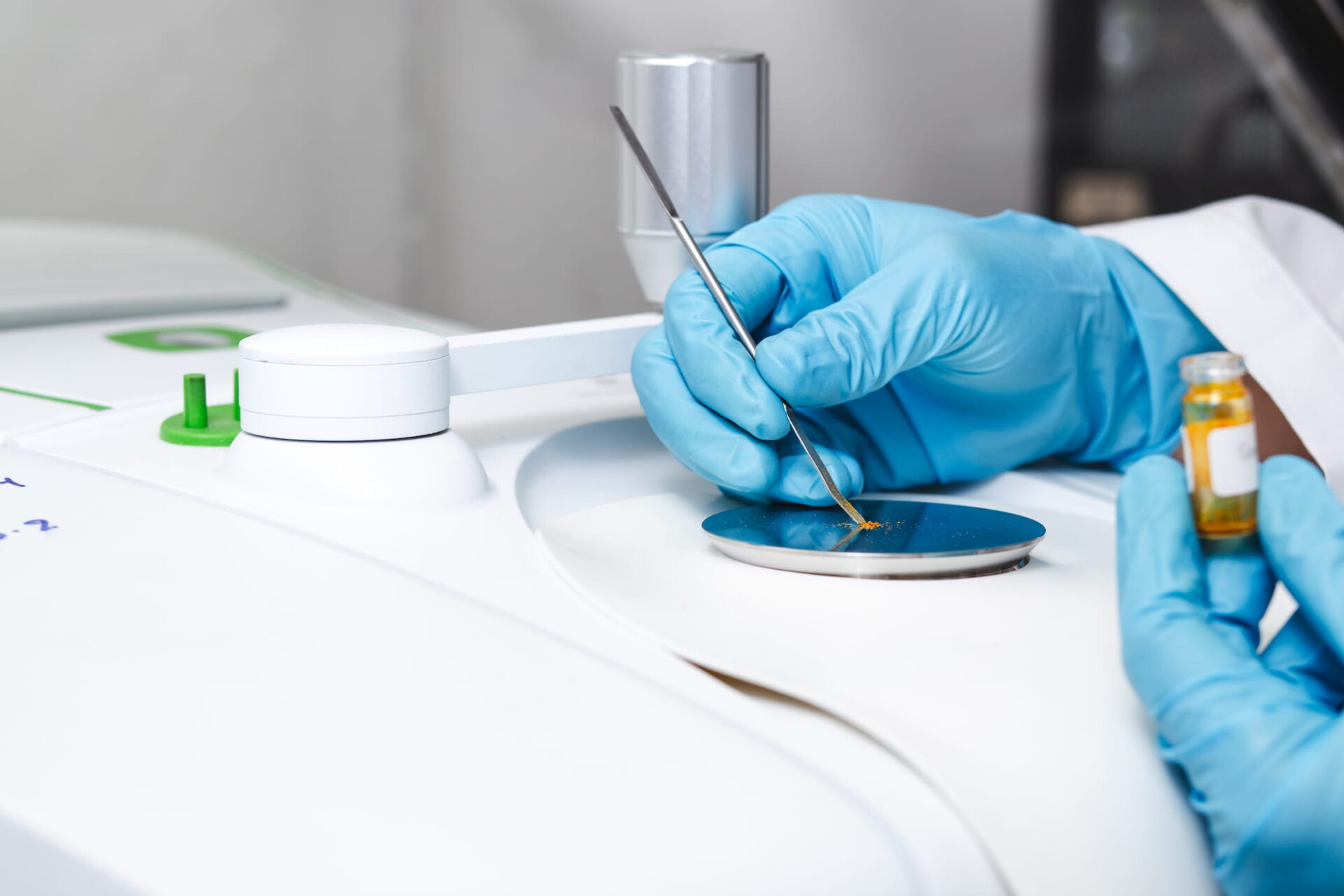In our new article titled “Spectroscopy Explained”, you’ll learn how chemical testing is performed to answer many questions about material composition and identification for R&D or material certification. We focus on optical emission spectroscopy (OES) and compare the ICP-OES and Spark OES test methods in detail. This article was published in the November 2020 issue of Quality Magazine.
An Overview of Spectroscopy
Spectroscopy is a method of molecular or atomic analysis that uses light to excite a sample and study its response.
The bonds between molecules are at characteristic lengths depending on the difference in electronegativity between the bonding species. As such, energy excitation via light sources (most often infrared in the case of spectroscopy) can identify certain bond types or functional groups depending on the amount of energy absorbed at graduating frequencies. Measuring this absorbance gives clues about the contents of the material. While spectroscopy doesn’t identify the molecule(s) in the sample, it is an invaluable investigative tool to confirm the presence of certain bonds and species.
However, traditional spectroscopy techniques have a few limitations for material testing: the bonding structure of metals differs significantly from covalent molecules, and sub-surface analysis may be necessary. In these cases, optical emission spectroscopy (OES) is more suitable, using light in the visible and ultraviolet range to excite the matter to higher energy states and measure the photons released during deexcitation. The higher the absorption of light at a particular frequency, the greater the concentration of the atom species in the sample.
There are multiple setups available to excite the sample energetically. Consider two of the more popular methods:
Inductively-Coupled Plasma OES (ICP-OES)
An ICP-OES contains a sample introduction system, a plasma generator for excitation, and optics and detectors to measure photons released by the sample. The distinguishing element is an RF generator, which stores energy within a load coil before transfer to a pre-ionized gas chamber for ignition. The high-energy flame completely vaporizes the material. Samples must be liquid as they enter the vaporization chamber through a nebulizer that sprays liquid droplets. These droplets filter according to size so that only the smallest droplets reach the vaporization chamber.
An aqueous test solution usually requires an appropriate acid. Precise stochiometric ratios of sample and acid combine in a heated environment to ensure an extremely high level of solvation. Advantageously, ICP-OES does not suffer from sample size restrictions due to this process, but this is a destructive process. ICP-OES also has an appreciably high detectability for most of the periodic table.
Spark OES
True to its name, Spark OES uses an electrical discharge between an electrode and a metal sample to operate. Light emitted from this discharge is collected and stored in capacitors until the discharge event ends. Measurement equipment then calculates the stored charge in the capacitors to characterize the sample. Machining (specifically, grinding and polishing) is necessary for a flat surface; otherwise, the test is nondestructive. Calibration of sample measurements against known values is also a requirement at the beginning of testing to develop a correction factor.
Spark OES equipment is cheap to operate and maintain, and tests are rapid. Since the operators can control the depth to which the grinding and polishing occurs, sub-sample analysis at any level is a possibility. Limits to the analysis are sample size (it must completely cover the aperture used to collect photons during discharge) and that standards are intractable (unlike a liquid standard with dilution capabilities, a solid standard cannot vary after manufacturing).
Related Articles
How Small a Defect Can UT Find
Customers often ask LTI how small a defect ultrasonic testing (UT) can find. This question is very difficult to answer…
Ethics in Laboratory Testing
What could be more important than ethics in the world of materials testing? Testing laboratories have an obligation to adhere…
Quality Considerations in Chemical Analysis
A Well-Planned and Managed Quality Control Program When you need chemical analysis services, you expect to receive accurate testing and…
Third-Generation Family Member Becomes President
Passing the Baton After 25 years as president of Laboratory Testing Inc. (LTI), Michael J. McVaugh is retiring from the…
Promoting NDT to the Next Generation
Nondestructive Testing (NDT) helps ensure the reliability and safety of materials and products manufactured by many industries, yet it’s a…
FAQs About Testing Forged Metal Parts
Forged Metal Parts FAQ Material testing is necessary for forged metal parts, but not all tests are equal. The big…

